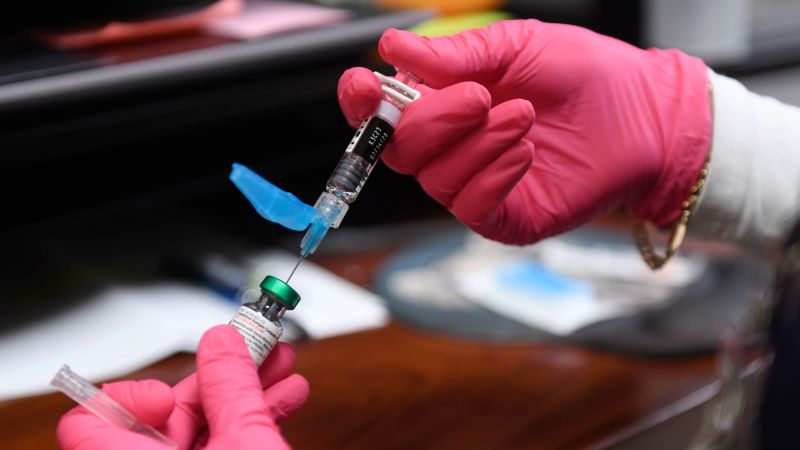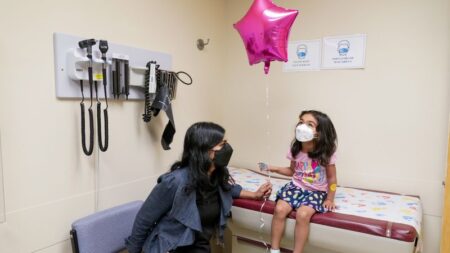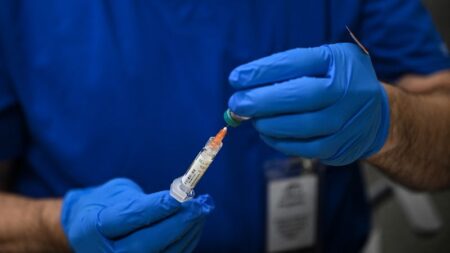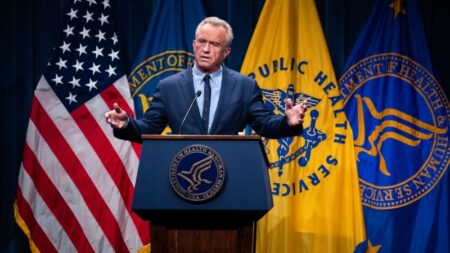The recent surge in measles cases within the United States has raised alarm bells for public health officials and communities alike. As of mid-2025, the nation has recorded at least 1,277 confirmed cases of measles, a figure that surpasses any annual total since 2000, the year measles was declared effectively eliminated in the country. This resurgence of measles is primarily attributed to disconcerting declines in childhood vaccination rates and specific outbreaks emerging from areas with low vaccination coverage.
In previous years, particularly since 2000, the average annual number of reported measles cases was around 180. The current scenario poses a stark contrast, especially when considering that the previous peak in 2019 had recorded 1,274 cases, mostly associated with outbreaks in specific communities that had been exposed to anti-vaccine misinformation. This epidemic has been most prominently seen in Texas, where over 750 cases have been linked to a significant outbreak beginning in late January 2025, particularly in Gaines County—a region with disproportionately low vaccination rates among schoolchildren.
Tragically, the resurgence of measles has not been without its fatalities; so far, three unvaccinated individuals—two children from Texas and an adult in New Mexico—have succumbed to the disease. This number equals the total deaths attributed to measles over the previous 25 years, serving as a sobering reminder of the disease’s potential deadliness.
The effective measles-mumps-rubella (MMR) vaccine plays a crucial role in controlling measles outbreaks, first introduced in the United States in the 1970s. Following years of successful vaccinations and increased immunity among the population, the Centers for Disease Control and Prevention (CDC) heralded the elimination of measles as a historic public health achievement. However, the present situation, with an enduring outbreak lingering in West Texas, threatens to reverse the strides made over the past quarter-century. Should the number of cases linked to the outbreak continue to rise beyond January 2026, the U.S. could face the prospect of losing its measles elimination status.
Beyond Texas, several cases linked to this outbreak have also been reported in neighboring states, including New Mexico and Oklahoma, as well as indications of potential cases in Kansas. The implications of these growing clusters highlight a fast-evolving situation that is increasingly grim. In response, several affected areas have established special vaccination clinics aimed at bolstering immunization coverage. Many counties have introduced new guidelines allowing infants to receive their first MMR shot as early as six months of age. Data indicates a sharp rise in vaccination rates among infants this year when compared to previous years.
Despite these efforts, the spread of measles has continued to accelerate throughout the country, with at least 27 total outbreaks recorded so far. Notably, recent incidents in Colorado have linked epidemic cases to air travels, emphasizing the disease’s highly contagious nature. A traveler infected with measles reportedly transmitted the disease to multiple individuals while in transit, underscoring the expansive reach of this highly transmissible virus.
This year’s statistics reveal that unvaccinated individuals constitute the majority of measles cases—only about 8% of the confirmed cases involved individuals who received at least one dose of the MMR vaccine. Alarmingly, hospitalization rates have surged as well, with at least 155 individuals being hospitalized due to the disease. The CDC suggests that individuals under the age of five are particularly vulnerable, making the vaccine’s safety and efficacy more crucial than ever, considering one dose of the MMR vaccine is 93% effective against measles.
The pressures of public health have intensified amidst an evolving political landscape. The U.S. Department of Health and Human Services has set a vaccination threshold whereby 95% of kindergartners must be vaccinated to maintain herd immunity against outbreaks. However, recent data indicates that this target has not been met for over four years. Compounding this issue, exemptions from required vaccinations among kindergartners reached a record high in the 2023-24 school year, with over 125,000 children unable to meet at least one state-mandated vaccination requirement.
The government response has been notably under scrutiny, particularly following recent statements from figures such as Health and Human Services Secretary Robert F. Kennedy Jr., whose background with vaccination advocacy is complex and has raised concerns among health officials. As the dynamics of public health policies evolve, experts emphasize the critical need to return to vaccination as the primary tool for preventing such outbreaks and safeguarding the health of the country’s children against vaccine-preventable diseases, including the profound threat posed by measles.












